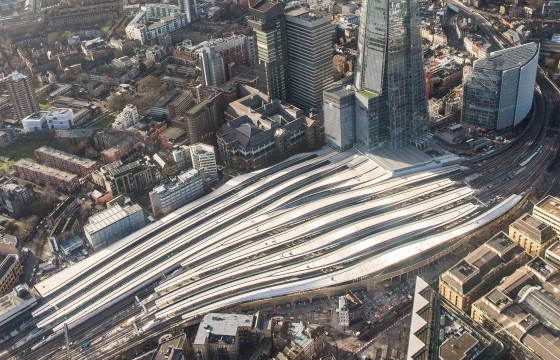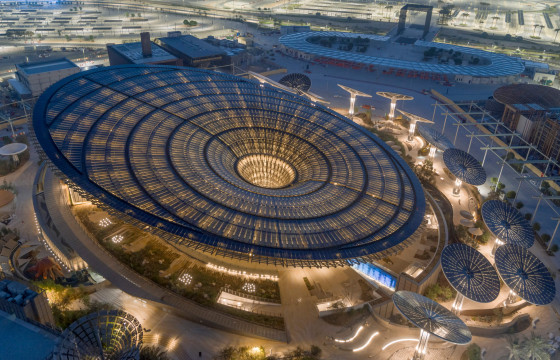27.10.2023
Grimshaw has been active in France for over six years and started operating as a studio in Paris in 2022. At the root of its success, says Declan McCafferty, Partner at Grimshaw, is the opportunity to exchange expertise, expand design-thinking, and engender connections.

The opening of Grimshaw’s studio in France is one of eight international studios for Grimshaw, and like Los Angeles and Auckland - our ‘youngest’ studios - one borne from a live project: the Grand Paris Express (GPE) metro. In July 2023, Grimshaw was selected, as part of the the VINCI-led Intencités15 consortium*, for the construction of La Défense station on the future west-south section of Ligne 15 of the GPE. Previous to this, in 2016 the practice took a lead in the design of Mairie and Fort d’Aubervilliers stations as part of a consortium formed with Egis, Ingerop, Tractebel and a team of European architects including Vezzoni, Explorations Architecture, Bordas & Peiro and Brenac & Gonzalez. This ultimately helped set up Grimshaw’s Paris studio. In addition to the opportunity provided by the project, the decision to establish a practice in France was informed by three key strategic opportunities.
Within two months of our success on the Ligne 15 Grimshaw based a team in Egis’s offices in eastern Paris. Today the practice operates its own studio of 15 in the 11th arrondissement. From these early consortium days, we developed invaluable insights into the distinct contractual and negotiation systems of the market – getting to grips with balancing potential risks, much quicker than if we had been working in isolation and understanding the subtle differences between the UK and French market. Quickly it became apparent that the procurement of major public transport and infrastructure projects was, in Paris and other major cities in France, starting to evolve to a contractor-led environment, one Grimshaw is all too familiar with. Our experience – on projects such as London Bridge where we delivered high quality design within a contractor-led team and the Elizabeth line in London, where architectural solutions were informed by a detailed understanding of construction and fabrication constraints - became a differentiator.
What comes first, however, is the project and the GPE project the practice had been monitoring with interest and envy from London. The city-shaping agenda of UK infrastructure projects is often implicit but in Paris with the GPE the intention is to use transport projects to explicitly shift the city to a poly-centric metropolitan area, in line with the Métropole du Grand Paris’s ambition for a true 15-minute city. Twice the size of the Elizabeth line (formerly Crossrail), the GPE proposes a ring of new metro stations beyond the Périphérique, connecting Paris’s neglected banlieues to each other. Each metro station will form the core of new town-centres developed in response to local-needs: a positive approach to addressing the real physical, social and economic divisions within the city.
Grimshaw has experience, across its international studios, designing infrastructure which helps enable similarly ambitious urban, societal change. In particular, in the southeast of Amsterdam, Bijlmer, ArenaA station has helped reconnect neighbourhoods once divided by the railway: by creating a public space ‘owned’ by the community, transforming the area from what was previously uninviting and unsafe. The Société de Grand Paris has established a direct and inspiring vision for the social impact and success of infrastructure in reshaping the relationship between central Paris and the suburbs. Time will tell whether this ambition is achieved, but London and other cities can learn from the clarity and forthrightness of their ambition.

Rolling back to five years ago, and the impact of Brexit, Grimshaw’s successful GPE bid interview was preceded, by only a few days, with the referendum result. The UK was leaving the EU but as a practice we were adamant about keeping a design connection to the continent. The practice was not prepared to fully accept the severed trade and market opportunities as a result of the exit and wanted to show our European employees that we had a commitment to Europe.
With a history designing and delivering projects on the continent, from the Ludwig Erhard Haus in Berlin to the Caixa Galicia Art Foundation in Spain – connecting cross cultural design thinking has been invaluable to the progression of our practice and the profession. This is supported, today, by 35% of Grimshaw’s employees originating from continental Europe.
The growth of Grimshaw however, with its international and reach and reputation, we know is not completely fail safe. We don’t have an automatic ticket to an in-country design competition or major project, no matter the aligned expertise and experience that we bring. We understand that Grimshaw needs to demonstrate a commitment to, and understanding of, local issues with an in-country presence. This is what has made Grimshaw what it is today – a globally connected practice with knowledge and empathy to local culture.

*Intencités15 consortium :
VINCI Construction Grands Projets (lead), Chantiers Modernes Construction, Razel-Bec, Dodin Campenon Bernard, SDEL Infi, Fayat Energie Services, ETF, as well as an integrated design team made up of Artelia (lead), Ingérop, JFS Architectes, Grimshaw, AREP Architectes, Archi 5 Prod, Philippe Gazeau Architecte

London needs to keep the focus as it makes progress towards becoming a sustainable, resilient, future-proof city
by Paul Toyne

The Grimshaw Podcast Series 1: The City Series
by Andrew Cortese

Opening an office overseas could be a smart move in the current climate
by Mark Middleton

Museums as Infrastructure
by Lukas Thorn